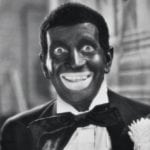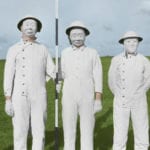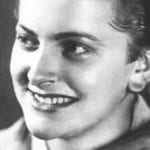 Technology
Technology  Technology
Technology  Humans
Humans 10 Everyday Human Behaviors That Are Actually Survival Instincts
 Animals
Animals 10 Animals That Humiliated and Harmed Historical Leaders
 History
History 10 Most Influential Protests in Modern History
 Creepy
Creepy 10 More Representations of Death from Myth, Legend, and Folktale
 Technology
Technology 10 Scientific Breakthroughs of 2025 That’ll Change Everything
 Our World
Our World 10 Ways Icelandic Culture Makes Other Countries Look Boring
 Misconceptions
Misconceptions 10 Common Misconceptions About the Victorian Era
 Mysteries
Mysteries 10 Strange Unexplained Mysteries of 2025
 Miscellaneous
Miscellaneous 10 of History’s Most Bell-Ringing Finishing Moves
 Technology
Technology Top 10 Everyday Tech Buzzwords That Hide a Darker Past
 Humans
Humans 10 Everyday Human Behaviors That Are Actually Survival Instincts
 Animals
Animals 10 Animals That Humiliated and Harmed Historical Leaders
Who's Behind Listverse?

Jamie Frater
Head Editor
Jamie founded Listverse due to an insatiable desire to share fascinating, obscure, and bizarre facts. He has been a guest speaker on numerous national radio and television stations and is a five time published author.
More About Us History
History 10 Most Influential Protests in Modern History
 Creepy
Creepy 10 More Representations of Death from Myth, Legend, and Folktale
 Technology
Technology 10 Scientific Breakthroughs of 2025 That’ll Change Everything
 Our World
Our World 10 Ways Icelandic Culture Makes Other Countries Look Boring
 Misconceptions
Misconceptions 10 Common Misconceptions About the Victorian Era
 Mysteries
Mysteries 10 Strange Unexplained Mysteries of 2025
 Miscellaneous
Miscellaneous 10 of History’s Most Bell-Ringing Finishing Moves
Top 10 Forgotten Murders Of Once-Famous Athletes
Nowadays, athletes are among the most famous members of society. People want to learn everything about their lives down to the last detail, and thanks mostly to the internet and social media, they can. This was not always the case, though. These ten athletes enjoyed success in their time, but their shocking murders are all but forgotten these days.
10Arthur Brennan, Australian Football
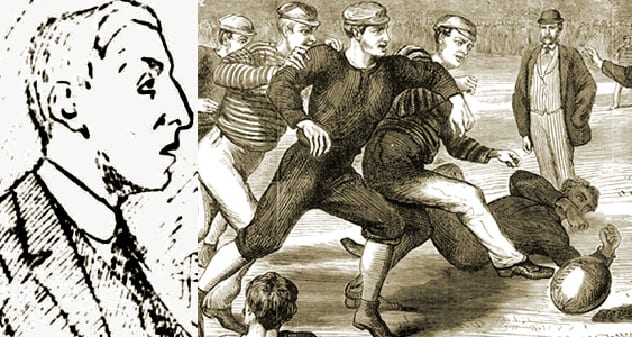
Arthur Brennan had a semi-successful career as an Australian rules footballer in the early 20th century. He also had a colorful rap sheet—in 1914, Brennan stood trial for bigamy, and in 1918, while serving in the Australian Imperial Force, he was court-martialled for breaking into a French restaurant.
By 1931, Brennan retired and was living a quiet life in North Fitzroy, Melbourne, with his five sisters. One September night, his neighbors went out, leaving only Nora Power home. She was in the kitchen reading when she heard a commotion at the door and realized someone was trying to break in. Power managed to signal the Brennan’s by beating on the kitchen wall they shared. When Arthur Brennan went outside to investigate, he saw a man in a gray overcoat trying to enter the Power household.
At first, the stranger tried to apologize and excuse himself, but when Brennan tried to detain him, the two started wrestling in the Powers’ garden. A man of stature and a former athlete, Brennan overpowered the intruder. However, during the struggle, the other man managed to free one hand and pulled a pistol from his overcoat. He shot Brennan point blank and made his escape.
Arthur Brennan died within minutes. Even though neighbors gave chase and the gunman was seen by several people, he was never caught or identified.
9Henri Pélissier, Cycling
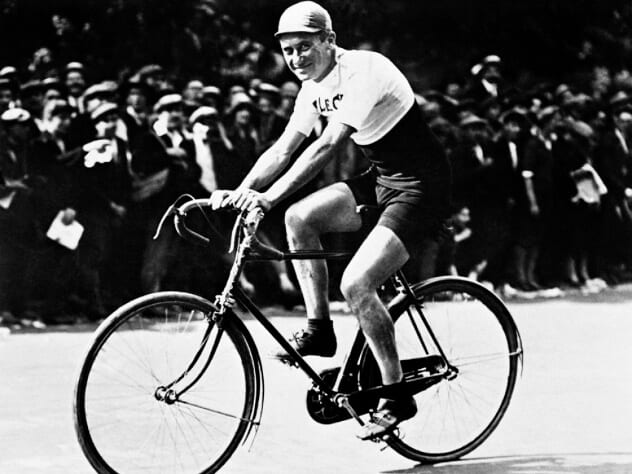
Despite being a successful cyclist and winning the Tour de France in 1923, Henri Pélissier is remembered more for his feud with Tour organizer Henri Desgrange and his murder.
After Pélissier was killed on May 1, 1935, the headline of the Paris-Soir read “The Tragic End of Henri Pélissier surprises no-one at Dampierre.” This is because the cyclist had a reputation of being a difficult man, both in his personal and professional lives.
In the cycling world, Pélissier often butted heads with Tour de France organizers and sponsors over their poor treatment of cyclists which he regarded close to slavery. Pélissier would have been far more successful if he had not abandoned so many races out of anger. He also tried to start a union, but few racers wanted to be led by a man as volatile as him.
In his personal life, Pélissier lived up to the French lover stereotype and would often let his wife, Léonie, deal with the numerous marriage proposals he received. This, eventually, drove her to suicide in 1933. Pélissier soon took on a young lover, Camille, who was more hot-tempered than him. One night, the two had an argument which escalated into a fight. When Pélissier threatened Camille with a knife, she ran to the bedroom and picked up the gun Léonie had killed herself with and shot Pélissier five times. At her trial, the jury sided with Camille and gave her a one-year suspended sentence.
8Oscar Bonavena, Boxing
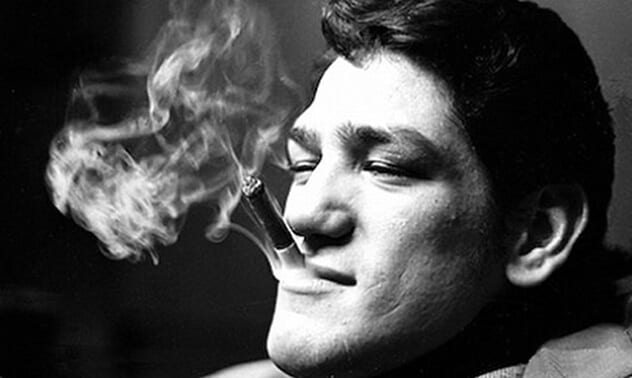
Argentinean prizefighter Oscar Bonavena met his end in 1976 at the infamous Mustang Ranch, the first licensed brothel in Nevada. The story was that Bonavena became a little too familiar with the wife of the brothel’s owner, Joe Conforte.
Despite never becoming heavyweight champion, Bonavena had a prolific boxing career, highlighted by strong bouts against Joe Frazier and Muhammad Ali. Nicknamed “Ringo” due to his Beatles haircut, Bonavena began spending time at the Mustang Ranch. There, he met Sally Burgess, Conforte’s wife. The two hit it off immediately and became close friends, and eventually, Burgess began managing the boxer. Obviously, rumors soon sprang up of an affair between the two.
During a reopening of the brothel after a fire, Bonavena was mingling with guests with a managerial demeanor and was overheard saying to people “How you like my new joint?” That was the last straw for Conforte who threw both Bonavena and Burgess out and ordered his guards to stop them using force should they return.
Despite Conforte’s order, Bonavena returned a few days later wanting to see him. He got into an argument with the guards until Ross Brymer, Conforte’s personal bodyguard, came out with a rifle. At that point, Bonavena retreated behind his car and was shot through the heart. He died instantly, and during the investigation, officers concluded the pugilist was trying to retrieve a .38-caliber revolver from his boot.
7Rikidozan, Wrestling
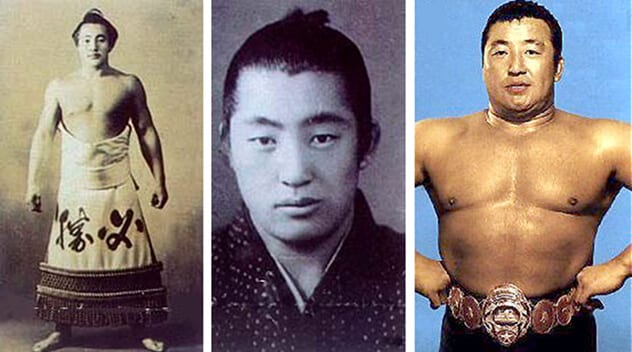
Kim Sin-rak, better known as Rikidozan, was the man who made professional wrestling popular in Japan. Born in Korea in 1924, he traveled to Japan to become a sumo wrestler. He adopted the Japanese name of Mitsuhiro Momota and billed himself as being from Nagasaki, but felt that prejudice against Koreans always prevented him from being successful.
In 1950, Momota retired from sumo and switched to pro wrestling. Now going by Rikidozan, he took advantage of the hero-villain dynamic of wrestling by portraying himself as a Japanese hero defeating American wrestlers who played villains. Rikidozan became an instant sensation in post-war Japan. This led to him opening the Japan Pro Wrestling Alliance in 1953, the first wrestling promotion in Japan.
On December 8, 1963, Rikidozan was partying in a Tokyo nightclub when he got into an argument with another man who was yakuza. According to the story, even though the other man stabbed Rikidozan, the wrestler still managed to throw the yakuza member out and continued partying. When he finally received medical attention, the doctor told Rikidozan he would be fine, but he died of peritonitis a week later.
More bizarre was the rumored involvement of famed judoka Masahiko Kimura. His foray into pro wrestling involved an infamous match against Rikidozan. The planned finish was to fight to a draw and set up more rematches down the line. Instead, Rikidozan legitimately knocked Kimura out to make himself look strong. Even though Kimura’s involvement was later dismissed, it was long suspected that he played a hand in Rikidozan’s death.
6Larry McLean, Baseball
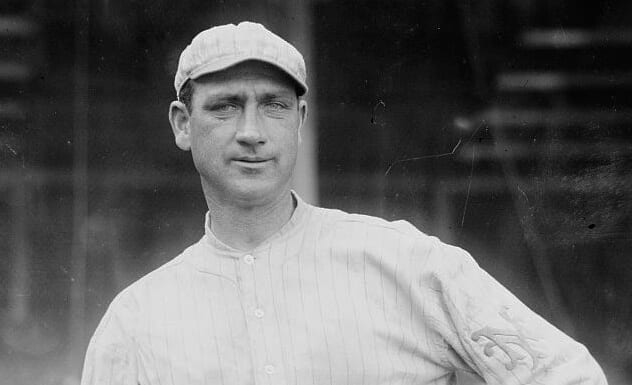
Larry McLean had a 15-year baseball career during the early days of Major League Baseball, playing in the National League even before the MLB was formed. During his tenure, McLean played for six different teams, spending his final years with the New York Giants.
A heavy drinker, McLean became better known for his erratic behavior and violent outbursts rather than his playing. In 1915, he was suspended for failing to stay in shape. He decided to let out his frustrations violently, targeting scout Dick Kinsella and Giants manager John McGraw. McLean and a group of friends attacked them in the lobby of the team’s hotel. The brawl ended when Kinsella broke a chair over McLean’s head. Unsurprisingly, McLean was immediately fired from the New York Giants and never played in another major league game.
On March 14, 1921, McLean was drinking his sorrows away in a Boston bar with a friend named Jack McCarthy. Just the night before, the former baseball player had an altercation with the bartender in that same bar which forced the latter to flee his post to escape a beating. The bartender working this night, though, brought along a gun for protection.
Once McLean was drunk, he was looking for trouble again. Egged on by his equally-inebriated companion, McLean got angry when the bartender refused to give him a cigarette and tried to crawl over the bar. At this point, the bartender pulled out the gun and shot both McLean and McCarthy. His friend survived, but McLean died at the hospital.
5Oliver Halassy, Water Polo
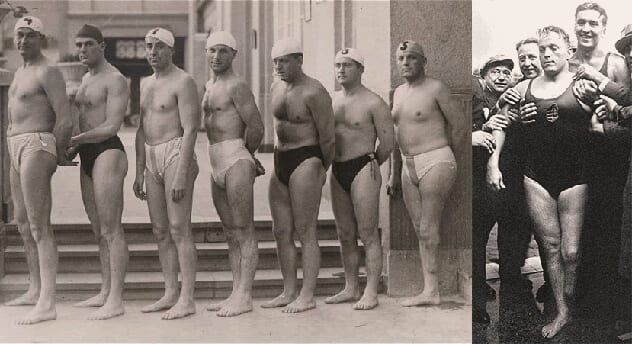
Hungarian Oliver Halassy had the distinction of being the first amputee swimmer to compete in the modern Olympics. He took part in the water polo and freestyle swimming events in the 1928, 1932, and 1936 Summer Olympics.
Halassy lost part of his left leg in a streetcar accident when he was a child. Despite this, he went on to become one of the greatest water polo halfbacks of his generation. He scored 20 goals in his Olympic matches and helped the Hungarian team earn one silver and two gold medals.
Halassy’s Olympic success might have continued if not for the Second World War. Due to his disability, the former Olympian was exempted from military service. Unfortunately, he still became a victim of the war. In September 1946, the 37-year-old Halassy was accosted by Soviet soldiers near his home in Budapest. They gunned him down during a robbery and successfully made their escape.
4Lloyd Seay, Stock Car Racing
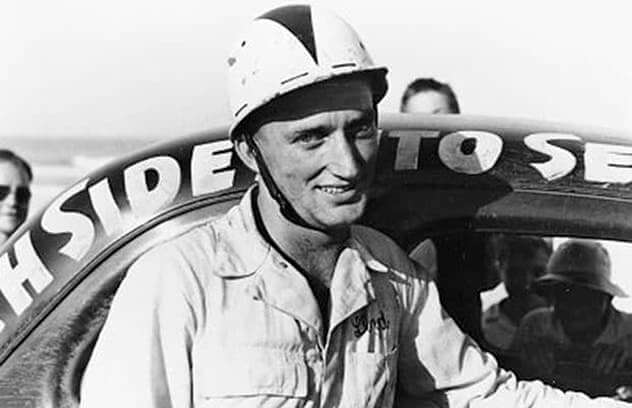
“Lightning” Lloyd Seay was a pioneer of stock car racing. Even though he died before the creation of NASCAR, the organization’s founder, Bill France Sr., called Seay the “best pure race driver (he) ever saw.”
Like most stock car drivers of his day, Seay’s skills were born out of necessity due to his extracurricular activities as a moonshiner. Georgia lawmen knew the Seay family well, and some had an unspoken respect for Lloyd. As one deputy said, he was “absolutely fearless,” and the only way they could hope to catch him was by shooting his tires.
Seay started racing professionally in 1938 when he was 38 years old. Despite being successful immediately, he never quit the moonshine business, and it was a dispute over moonshine that got him killed.
On the morning of September 2, 1941, Lloyd was at his brother Jim’s house when their cousin, Woodrow Anderson, arrived. He was angry with Lloyd over some sugar he allegedly bought and charged to Woodrow’s credit. At first, it looked as if the trio left to meet with Woodrow’s dad and settle things amicably. However, when they got there, Woodrow jumped Lloyd. He then pulled out a gun, first shot Jim in the neck and then killed Lloyd with a shot through the heart.
Woodrow told a different story. He claimed the brothers first jumped him, and he then went and retrieved his pistol to defend himself. However, he was found guilty of killing “Lightning” Lloyd Seay and sentenced to life in prison.
3Claude Tozer, Cricket
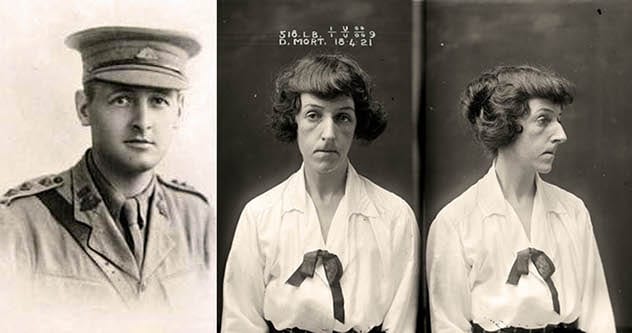
As the nephew of Australian cricketer Percie Charlton, Claude Tozer had the sport in his blood. However, like most sportsmen of the early 20th century, he also had to find a second career to pay the bills. That is why he also served as a medical doctor while playing for New South Wales.
The years after World War I were hard for Tozer. He was dealing with injuries from battle, may have been suffering from PTSD, and had lost his wife and father. Although ill-advised, he started a relationship with a married patient named Dorothy Mort. Unfortunately, Mort was fighting her own mental issues stemming from a time in her childhood when her father tried to kill her and her mother with an ax.
In December 1920, a few months after they met, Tozer realized he made a mistake and broke things off with Mort. In return, she bought a revolver, summoned Tozer to her house and shot him in the head. Afterwards, she took an overdose of laudanum and shot herself, too, but despite the odds, she survived. During her trial, her defense convinced the jury that Tozer had taken advantage of an unstable patient, and she was acquitted by reason of insanity.
2Charles de Ligne, Speed Skating

Charles de Ligne was an Olympic speed skater who competed in the 1936 Winter Games. More notable was his war record, though, as he was a decorated officer in World War I and worked with the underground resistance in Belgium during World War II. Despite this, de Ligne was killed in 1944 as a suspected German collaborator as the result of an assassination plot orchestrated by his wife.
Yvonne de Ligne was herself an Olympic skater, competing as a figure skater at the 1936 Winter Olympics. During World War II, she began an affair with a Dutch skater named Jacob Hartog. When her husband found out, he threw Yvonne out.
Her revenge turned out to be short and bloody. Somehow, Yvonne persuaded another man that her husband was, in fact, a Nazi collaborator, and convinced him that Charles needed to die. She lured her husband to their countryside getaway where the assassin shot and killed de Ligne using a German pistol so as to make it seem like the Gestapo killed him. The plan worked at first, but Yvonne was eventually convicted in 1945 and died after six years in prison of tuberculosis.
1Sonja McCaskie, Skiing
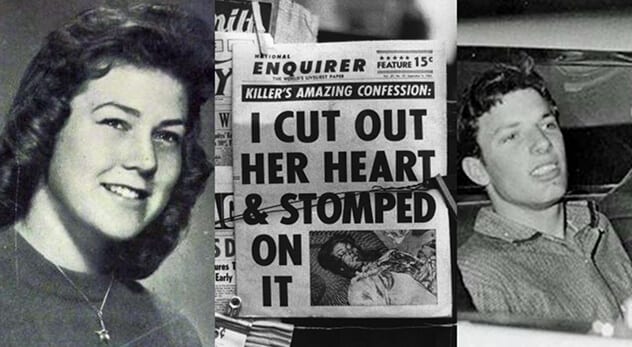
Born in Scotland in 1939, McCaskie soon moved to the United States where she took up skiing. Eventually, McCaskie got good enough to represent Britain during the 1960 Winter Olympics. She was killed three years later in Reno, Nevada, in what police of the time called the worst murder in the city’s history.
Officers came to check in on the part-time ski instructor after a woman notified them McCaskie failed to pick up her son from daycare. They eventually found her body stuffed in a chest. She had been strangled, raped, decapitated, and her heart had been cut out of her body.
Police were initially under the impression the killer was close to the victim since there were no signs of breaking in. They looked at the ex-husband and potential lovers, but no leads panned out. Police caught a break a week later when they traced a camera missing from McCaskie’s home to a pawn shop. The pawnbroker bought it for $10 from Thomas Lee Bean.
Bean was the 18-year-old son of a former preacher. He described the murder in detail and was sentenced to death, later commuted to life in prison.
The case drew significant attention after being covered in one of the most infamous editions of the National Enquirer. The entire front page featured a gruesome picture of McCaskie’s mutilated body along with the chilling confession from her killer—“I cut out her heart & stomped on it.”



